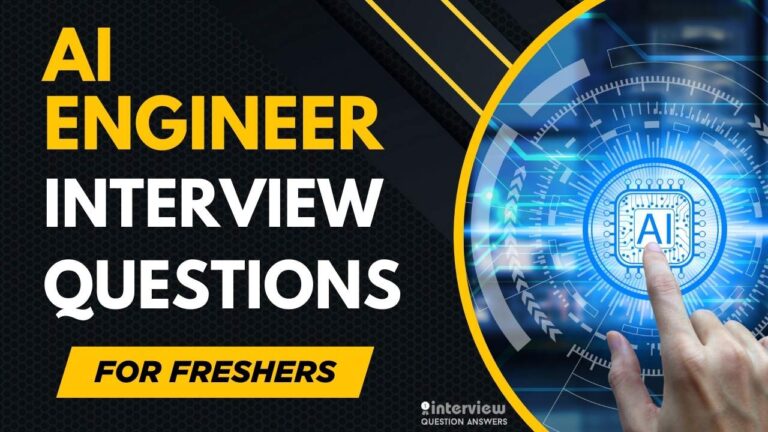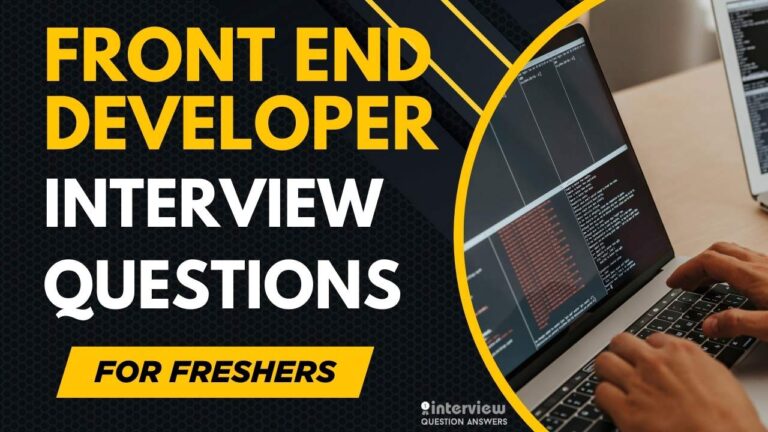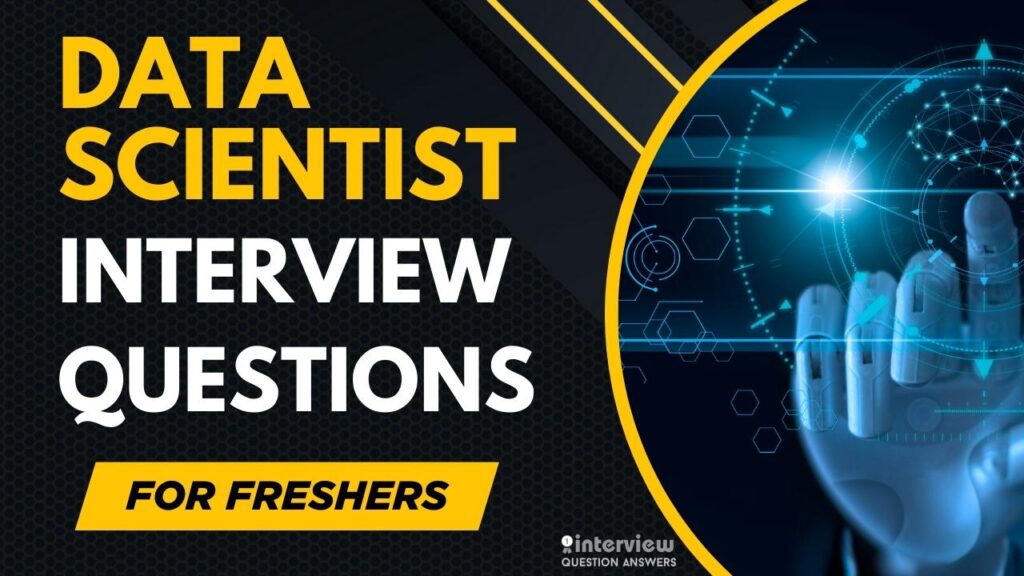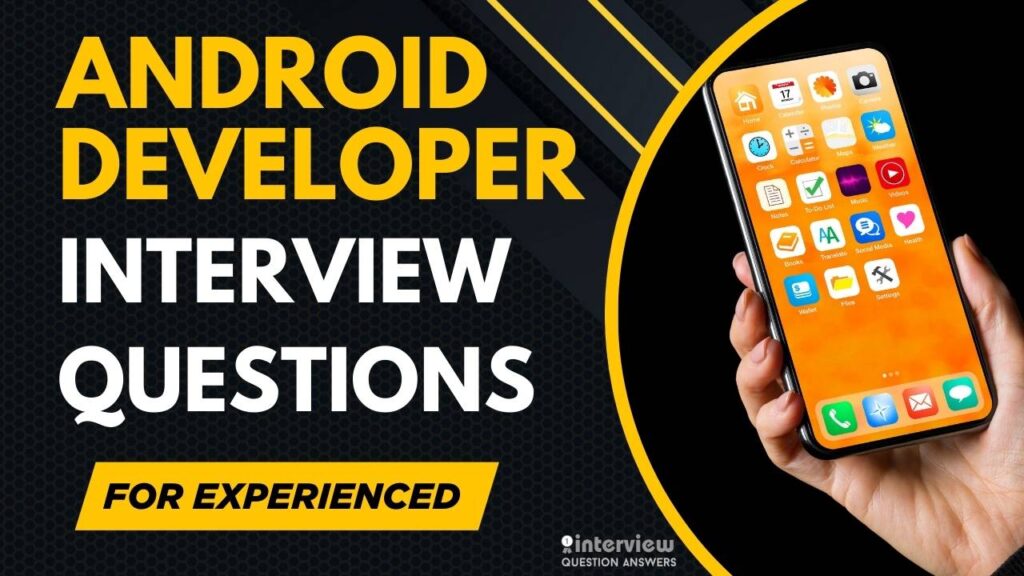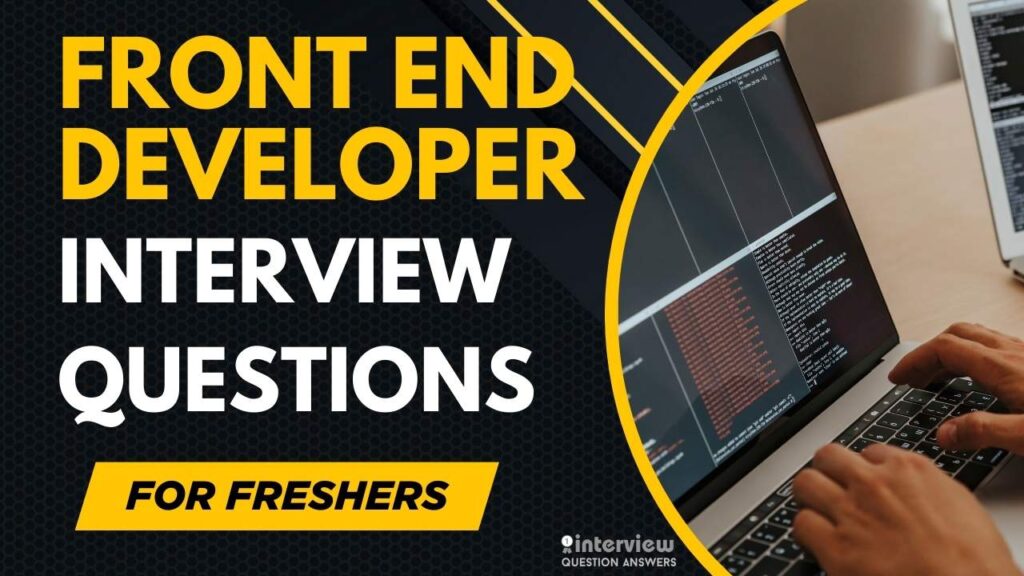Most Common Product manager Interview Questions for Freshers
Breaking into product management as a fresher means demonstrating a solid understanding of fundamental product strategy, market analysis, and user-centric thinking, skills that employers highly value in entry-level candidates.
To succeed in your first product manager interview, focus on showcasing your ability to apply analytical frameworks, empathize with customers, and contribute to product road mapping. Expect questions that test your knowledge of user research methodologies, feature prioritization, and cross-functional collaboration, as these are critical for driving successful product launches.
Product Manager Interview Questions for Freshers will help you showcase your strategic thinking abilities, understanding of product lifecycle, and readiness to drive successful product launches in today’s competitive market landscape.
Table of Contents
Basic Product manager Interview Questions for Freshers
Que 1. What is the role of a Product Manager in an organization?
Answer: A Product Manager (PM) defines the vision and strategy for a product, aligning it with business goals. They gather requirements, prioritize features, coordinate with cross-functional teams (e.g., engineering, marketing), and ensure successful delivery. For freshers in 2025, understanding the balance of customer needs and business objectives is key.
Que 2. What is the difference between a Product Manager and a Project Manager?
Answer:
| Feature | Product Manager | Project Manager |
|---|---|---|
| Focus | Product vision and strategy | Project execution and delivery |
| Scope | Long-term product lifecycle | Specific project timeline |
| Responsibilities | Feature prioritization, user needs | Schedule, budget, resource management |
For freshers, recognizing the PM’s focus on “what” and “why” versus the “how” and “when” is essential.
Que 3. How do you define a product’s vision?
Answer: Define a product’s vision by understanding customer needs, market trends, and business goals through research and stakeholder interviews. Document it in a vision statement shared via tools like Confluence. For freshers in 2025, aligning the vision with company strategy ensures clarity.
Que 4. What is a user story, and how do you write one?
Answer: A user story describes a feature from the user’s perspective, formatted as: “As a [user], I want [functionality] so that [benefit].” For freshers, writing clear, concise stories in tools like JIRA is critical.
Example:
As a customer, I want to filter products by price so that I can find affordable options.Que 5. How do you prioritize features for a product?
Answer: Prioritize features using frameworks like MoSCoW (Must-have, Should-have, Could-have, Won’t-have) or RICE (Reach, Impact, Confidence, Effort). For entry-level, consulting stakeholders and documenting in Trello ensures alignment.
Que 6. What is a Minimum Viable Product (MVP), and why is it important?
Answer: An MVP is a product with minimal features to test assumptions with users quickly. It’s important for validating ideas and reducing risks. For freshers in 2025, defining an MVP in a product roadmap aids iterative development.
Que 7. How do you gather customer feedback for a product?
Answer:
- Conduct surveys or interviews.
- Analyze user behavior via tools like Google Analytics.
- Monitor feedback on platforms like social media or forums.
For freshers, consolidating feedback in tools like Airtable supports decision-making.
Que 8. What is a product roadmap, and what does it include?
Answer: A product roadmap outlines the product’s strategic direction, including goals, features, and timelines. It includes milestones, releases, and priorities. For entry-level, creating roadmaps in Asana or Roadmunk ensures stakeholder alignment.
Que 9. How do you work with cross-functional teams as a Product Manager?
Answer: Collaborate by setting clear expectations, holding regular syncs, and using tools like Slack or JIRA for communication. For freshers in 2025, understanding team roles and facilitating meetings builds trust.
Que 10. What is the purpose of a customer persona in product management?
Answer: A customer persona is a fictional representation of the target user, including demographics, needs, and behaviors. It guides feature design and marketing. For freshers, creating personas in Miro or Excel ensures user-focused development.
Que 11. How do you handle conflicting feedback from stakeholders?
Answer: Facilitate discussions to align on priorities, use data to support decisions, and document trade-offs in Confluence. For entry-level, frameworks like RICE help resolve conflicts objectively.
Que 12. What is A/B testing, and how is it used in product management?
Answer: A/B testing compares two versions of a feature to determine which performs better based on metrics like conversion rates. For freshers, using tools like Optimizely to run tests validates design choices.
Que 13. How do you define success metrics for a product?
Answer: Define success metrics (e.g., user retention, revenue) based on product goals and track them using tools like Mixpanel or Google Analytics. For entry-level in 2025, aligning metrics with business objectives ensures measurable outcomes.
Que 14. What is the role of a Product Manager in Agile development?
Answer: In Agile, a PM acts as the product owner, defining user stories, prioritizing the backlog, and collaborating with teams during sprints. For freshers, participating in sprint planning using JIRA is essential.
Que 15. How do you conduct market research for a new product?
Answer:
- Analyze competitors using tools like SimilarWeb.
- Survey potential users via Google Forms.
- Study industry trends on platforms like Gartner.
For freshers, consolidating findings in a report supports strategic planning.
Que 16. What is a product backlog, and how do you manage it?
Answer: A product backlog is a prioritized list of features, bugs, and tasks. Manage it in JIRA or Trello by refining stories and prioritizing with stakeholders. For entry-level, regular backlog grooming ensures clarity.
Que 17. How do you communicate a product’s value to stakeholders?
Answer: Use presentations, demos, or one-pagers in PowerPoint or Canva to highlight benefits, supported by data or user feedback. For freshers in 2025, tailoring communication to stakeholder needs builds buy-in.
Que 18. What is the purpose of a go-to-market (GTM) strategy?
Answer: A GTM strategy outlines how a product is launched, including target audience, pricing, and marketing plans. For entry-level, contributing to GTM plans in collaboration with marketing teams ensures successful launches.
Que 19. How do you handle a feature request that doesn’t align with the product vision?
Answer: Evaluate the request against the vision, discuss with stakeholders, and document rejection reasons in Confluence. For freshers, proposing alternatives that align with goals maintains stakeholder relationships.
Que 20. What is the difference between qualitative and quantitative data in product management?
Answer:
| Feature | Qualitative Data | Quantitative Data |
|---|---|---|
| Nature | Descriptive, subjective | Numerical, measurable |
| Example | User interviews | Conversion rates |
| Use | Understand user needs | Track performance metrics |
For freshers, combining both in tools like Mixpanel drives informed decisions.
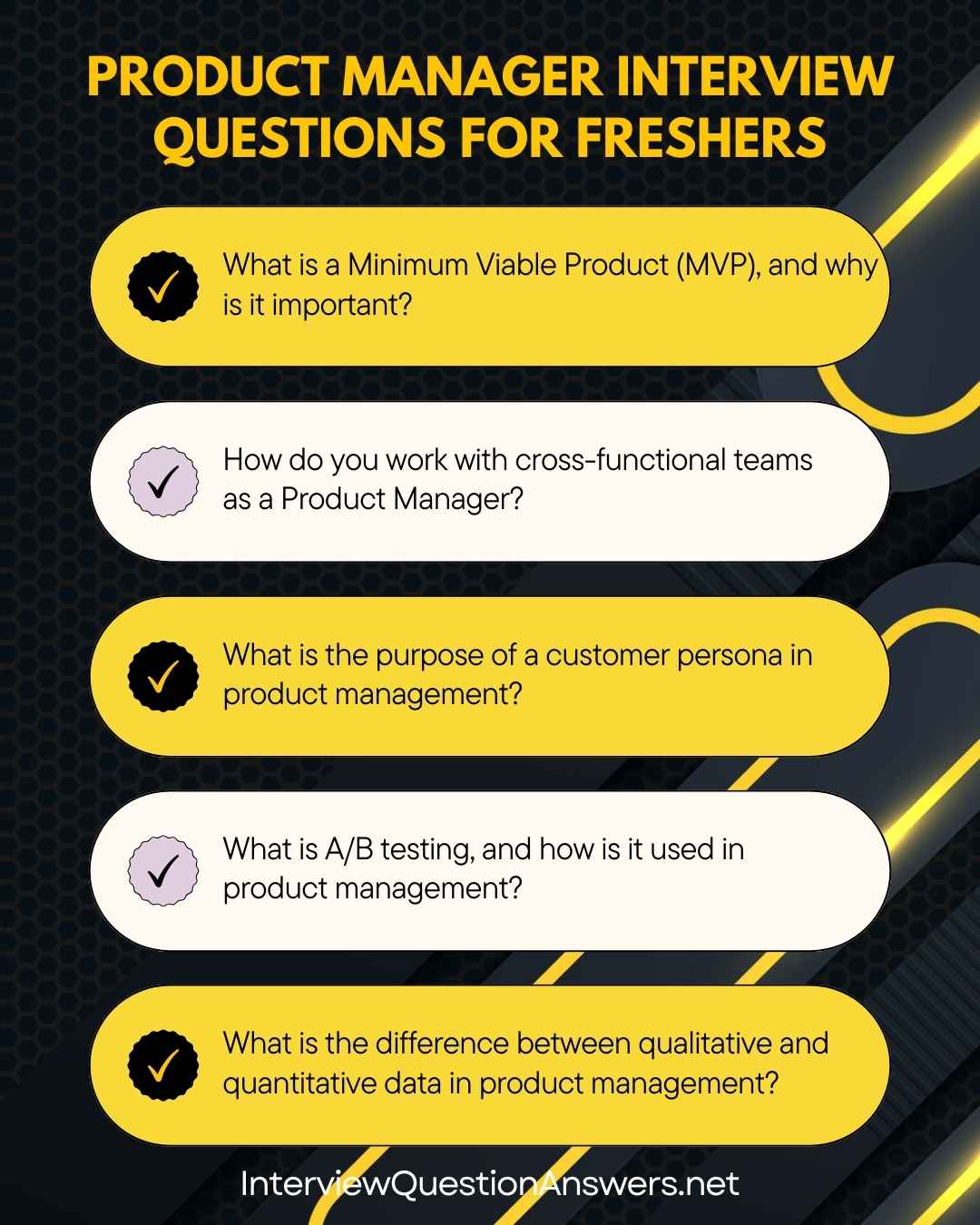
Entry Level Product manager Interview Questions
Que 21. What is the purpose of a product requirements document (PRD)?
Answer: A PRD outlines the product’s purpose, features, and functional requirements, serving as a guide for development teams. It includes user stories, success metrics, and constraints. For freshers in 2025, drafting a PRD in tools like Confluence ensures alignment between stakeholders and developers.
Que 22. How do you use customer journey mapping in product management?
Answer: Customer journey mapping visualizes a user’s interactions with a product, identifying pain points and opportunities. For entry-level, creating maps in tools like Miro or Lucidchart helps design user-centric features.
Example:
**Customer Journey Map**
- Stage: Awareness
- Action: Sees ad
- Pain Point: Unclear value
- Solution: Clear messagingQue 23. What is the difference between a feature and an enhancement?
Answer:
| Feature | Enhancement |
|---|---|
| New functionality added to the product | Improves existing functionality |
| Example: Adding a chat feature | Example: Improving chat UI |
For freshers, distinguishing these helps prioritize development tasks.
Que 24. How do you validate a product idea before development?
Answer:
- Conduct user interviews or surveys.
- Analyze market trends using tools like Google Trends.
- Build a prototype for feedback.
For entry-level in 2025, validating in tools like Figma ensures feasibility.
Que 25. What is a product lifecycle, and how does it influence your role?
Answer: The product lifecycle includes stages: ideation, development, launch, growth, maturity, and decline. A PM’s role shifts from defining features in ideation to optimizing in maturity. For freshers, understanding this guides strategic planning.
Que 26. How do you collaborate with UX designers to improve user experience?
Answer: Share user personas, provide feature requirements, and review wireframes or prototypes in tools like Figma. For entry-level, participating in design reviews and user testing sessions ensures user-centric outcomes.
Que 27. What is the Kano Model, and how does it help in product development?
Answer: The Kano Model categorizes features into basic, performance, and delighter categories based on user satisfaction. For freshers, applying it in prioritization (e.g., in Excel) ensures impactful feature selection.
Que 28. How do you handle a situation where a key feature is delayed?
Answer: Assess the delay’s impact, communicate with stakeholders, and adjust the roadmap or scope. For entry-level in 2025, documenting updates in JIRA and proposing workarounds maintains trust.
Que 29. What is the role of analytics in product management?
Answer: Analytics tracks user behavior, performance metrics, and product success using tools like Mixpanel or Google Analytics. For freshers, monitoring metrics like retention rate informs iteration decisions.
Que 30. How do you ensure alignment between product goals and business objectives?
Answer: Align by defining goals tied to business KPIs, validating with stakeholders, and documenting in a roadmap. For entry-level, regular reviews in Confluence keep teams aligned.
Que 31. What is a beta test, and why is it important?
Answer: A beta test releases a product to a limited audience to gather feedback before full launch. It identifies bugs and user issues. For freshers, managing beta tests via platforms like TestFlight is key.
Que 32. How do you prioritize bug fixes versus new feature development?
Answer:
- Assess bug severity and user impact.
- Use frameworks like RICE to compare with features.
- Consult stakeholders for prioritization.
For entry-level, logging decisions in JIRA ensures transparency.
Que 33. What is the purpose of a product backlog grooming session?
Answer: Backlog grooming refines user stories, prioritizes tasks, and removes outdated items. For freshers in 2025, facilitating grooming in Trello or JIRA keeps the backlog actionable.
Que 34. How do you use competitive analysis to inform product decisions?
Answer: Analyze competitors’ features, pricing, and user reviews using tools like SimilarWeb or Crunchbase. For entry-level, documenting findings in a report guides differentiation strategies.
Que 35. What is a product pivot, and when might it be necessary?
Answer: A product pivot changes the product’s direction (e.g., target audience, core feature) based on feedback or market shifts. For freshers, recognizing when user data indicates a pivot is crucial.
Que 36. How do you work with engineering teams to estimate development time?
Answer: Collaborate during sprint planning, break features into tasks, and use estimation techniques like story points. For entry-level, using JIRA for tracking estimates ensures realistic timelines.
Que 37. What is the difference between a product manager and a product owner?
Answer:
| Role | Product Manager | Product Owner |
|---|---|---|
| Focus | Strategy, vision, market fit | Tactical, backlog management |
| Scope | End-to-end product lifecycle | Agile team execution |
For freshers, understanding the PM’s broader role aids collaboration.
Que 38. How do you measure user adoption of a new feature?
Answer: Track metrics like feature usage, engagement rate, or user retention via tools like Amplitude. For entry-level in 2025, analyzing trends in dashboards informs iteration.
Que 39. What is the role of a Product Manager in a product launch?
Answer: Coordinate with marketing, sales, and engineering to define launch plans, set goals, and monitor post-launch performance. For freshers, creating launch checklists in Asana ensures smooth execution.
Que 40. How do you handle a stakeholder who insists on a low-priority feature?
Answer: Use data to show feature impact via frameworks like RICE, propose alternatives, and document decisions in Confluence. For entry-level, maintaining diplomatic communication preserves relationships.
Advanced Product manager Interview Questions for Freshers
Que 41. How do you use data-driven decision-making to prioritize product features?
Answer: Collect quantitative data (e.g., usage metrics via Mixpanel) and qualitative feedback (e.g., user interviews) to evaluate feature impact. Apply frameworks like RICE (Reach, Impact, Confidence, Effort) to score features and prioritize in tools like JIRA. For freshers in 2025, validating decisions with A/B testing and documenting in Confluence ensures objectivity.
Que 42. What is the role of a Product Manager in defining key performance indicators (KPIs) for a product?
Answer: A PM defines KPIs aligned with product and business goals, such as user retention, conversion rate, or revenue. Collaborate with stakeholders to set measurable targets and track via tools like Google Analytics. For freshers, ensuring KPIs are SMART (Specific, Measurable, Achievable, Relevant, Time-bound) drives focus.
Que 43. How do you conduct a competitor analysis to inform product strategy?
Answer: Analyze competitors’ features, pricing, and user experience using tools like SimilarWeb, SEMrush, or user reviews on platforms like G2. Identify gaps and opportunities to differentiate. For freshers in 2025, presenting findings in a SWOT matrix via PowerPoint supports strategic planning.
Que 44. What is the difference between product-market fit and product-channel fit?
Answer:
| Feature | Product-Market Fit | Product-Channel Fit |
|---|---|---|
| Focus | Product meets customer needs | Product suits distribution channel |
| Example | App solves user pain points | App optimized for app store |
| Metric | User retention, satisfaction | Channel-specific conversions |
For freshers, understanding both ensures effective product positioning.
Que 45. How do you manage stakeholder expectations when launching a product with limited features?
Answer:
- Communicate the MVP’s purpose and benefits early.
- Use a roadmap in Roadmunk to show future enhancements.
- Gather feedback post-launch to align on priorities.
For freshers, transparent updates via Slack or email maintain trust.
Que 46. What is the role of user personas in prioritizing product features?
Answer: User personas define target users’ needs, behaviors, and goals, guiding feature prioritization to address pain points. For freshers in 2025, creating personas in Miro and validating with user data ensures user-centric decisions.
Que 47. How do you use customer feedback loops to improve a product?
Answer: Collect feedback via surveys, in-app prompts, or support tickets, analyze using tools like Qualtrics, and iterate features based on trends. For entry-level, closing the loop by informing users of changes via email enhances engagement.
Que 48. What is a product differentiation strategy, and how do you develop one?
Answer: A differentiation strategy highlights unique features or value to stand out from competitors. Develop by analyzing market gaps, user needs, and competitor weaknesses. For freshers, documenting strategies in Confluence and testing via prototypes ensures viability.
Que 49. How do you balance technical debt with new feature development?
Answer: Assess technical debt’s impact on performance, prioritize critical fixes, and allocate time for refactoring in sprints. For freshers in 2025, using JIRA to track debt and collaborating with engineering ensures a balanced roadmap.
Que 50. What is the purpose of a product vision board?
Answer: A product vision board visualizes the product’s target audience, needs, goals, and features, aligning teams. For entry-level, creating one in tools like Mural fosters shared understanding.
Que 51. How do you use jobs-to-be-done (JTBD) framework in product management?
Answer: The JTBD framework focuses on what users aim to achieve with a product. Identify user jobs via interviews, map to features, and prioritize in Trello. For freshers, JTBD ensures solutions align with user goals.
Que 52. What is the role of a Product Manager in pricing strategy?
Answer: A PM researches market trends, competitor pricing, and customer willingness to pay, proposing a pricing model (e.g., subscription, freemium). For freshers, collaborating with sales and analyzing data in Excel supports pricing decisions.
Que 53. How do you handle a product feature that underperforms post-launch?
Answer:
- Analyze usage data in Amplitude to identify issues.
- Gather user feedback via surveys.
- Iterate or pivot the feature based on findings.
For freshers, documenting lessons learned in Confluence informs future iterations.
Que 54. What is the difference between a product roadmap and a release plan?
Answer:
- Roadmap: High-level, strategic plan for product direction.
- Release Plan: Detailed schedule for specific feature launches.
For freshers, aligning both in tools like Asana ensures clarity.
Que 55. How do you use prototyping to validate product ideas?
Answer: Create low-fidelity prototypes in Figma to test concepts with users, gather feedback, and refine requirements. For entry-level in 2025, iterative prototyping reduces development risks.
Que 56. What is the purpose of a product analytics dashboard?
Answer: A product analytics dashboard tracks KPIs like engagement or churn in tools like Power BI or Mixpanel, providing real-time insights. For freshers, customizing dashboards for stakeholders drives data-driven decisions.
Que 57. How do you ensure a product aligns with regulatory requirements?
Answer: Research regulations (e.g., GDPR, HIPAA), include compliance in the PRD, and consult legal teams. For freshers, documenting requirements in JIRA and validating with stakeholders ensures adherence.
Que 58. What is a product-market expansion strategy, and how do you approach it?
Answer: A product-market expansion strategy targets new markets or users for an existing product. Approach by researching market needs and adapting features. For freshers, using tools like Google Trends to validate markets is key.
Que 59. How do you manage dependencies between product features?
Answer: Map dependencies in a matrix, prioritize critical paths, and coordinate with engineering in JIRA. For entry-level, regular syncs with teams prevent delays.
Que 60. What is the role of a Product Manager in post-launch support?
Answer:
- Monitor user feedback and performance metrics.
- Coordinate bug fixes with engineering.
- Plan feature updates based on data.
For freshers in 2025, tracking support tickets in Zendesk ensures user satisfaction.
Conclusion
We’ve already provided Product manager Interview Questions for Freshers guide, that goes beyond the basics, offering a mix of foundational and advanced concepts that employers frequently assess in entry-level candidates. Today’s product management landscape is evolving quickly, with data-driven decision-making, AI-powered analytics, and agile methodologies becoming must-have skills for new professionals.
These questions are designed to build the strategic mindset you’ll need, from conducting market research to optimizing product strategies. By preparing thoroughly and aligning your knowledge with the latest industry trends, you’ll be ready to confidently step into your first product management role.
Similar Interview Guides:




